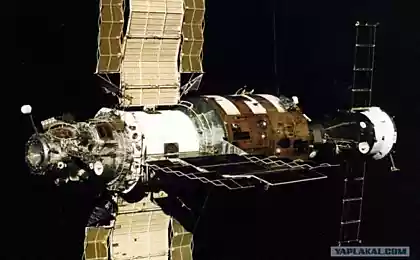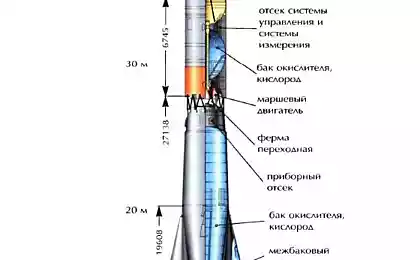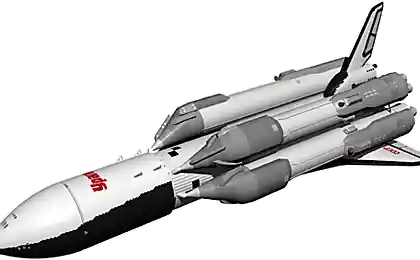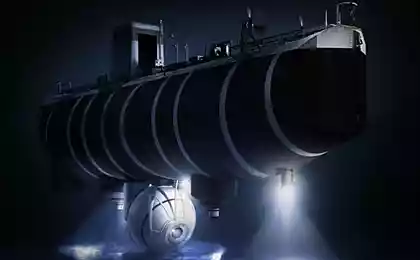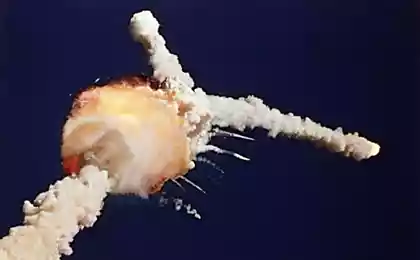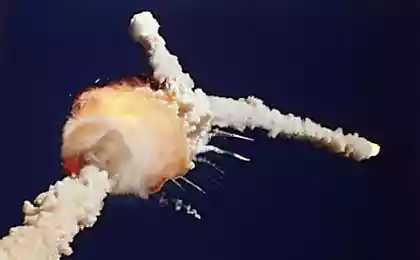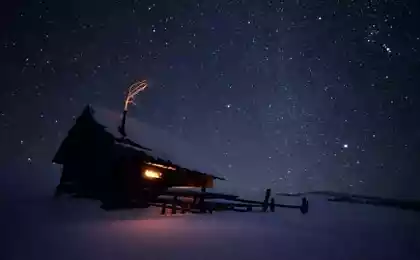1685
Through hardship to the stars. To the imperatives of space colonialism

"Mankind will not remain forever in the world, but in the pursuit of light and space, at first timidly penetrate beyond the atmosphere, and then conquer the whole space around the sun." Complementing such as the famous founder of astronautics Tsiolkovsky his no less famous phrase "Planet has a cradle of the mind, but one can not eternally live in a cradle».
This Tsiolkovsky expresses not only a personal opinion, but also the aspirations of enlightened humanity, even before the time when the heroes of the works of Jules Verne flew in cannon shells the moon. Space was an equally natural space flight of imagination (and not only), as well as in his time, a huge expanse of ocean, stretching far beyond the horizon, and there He was fascinated pioneers Age of Discovery.
Somehow, through the thorns of the world warrior, a man still found its way into space by the mid 20th century. Unfortunately, the euphoria of the first flights to orbit the Earth, and then to the moon changed relative stagnation of manned spaceflight for half a century.
As a result «2001: A Space Odyssey» was where less glorious , than imagine Kubrick and Clarke.
Why did it happen and what to expect from the space in the future, we can try to understand, going into three main parts of the imperatives that justify the expansion of human space.
Part 1: The Imperative of overpopulation. Demographics and resources. H5>
Most often this is the reason mentioned as the main reason for the development of other worlds. Indeed, over the past 100 years, the Earth's population has increased by 7 times, only the day comes to 250 000 new earthlings that allowing global mortality gives gain of 80 000 / day! And this number is constantly growing.
However, if you get to the core issues, then it looks not so pitiable.
For example, according to UN statistics, if the 50th of the 20th century on the planet every woman has an average of 5 children, this figure fell by half by 2010 (2, 5, with a tendency to decrease). Almost all the developed countries of the world are experiencing a general decline in fertility or negative population growth (even in China, it is close to 0)

Corollary effective demographic policy of the PRC applicable in other countries.
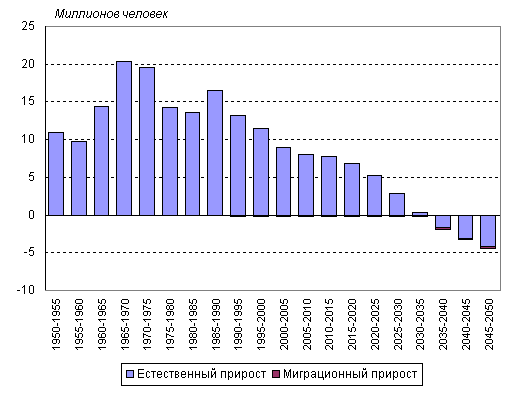
The highest population growth occurring in developing countries of Asia, Middle East, Africa and Latin America. However, there is noted a general decline in the birth rate due to higher standards of living and the gradual urbanization of the rural population.
According to most models demographic transition , if the current trends in population growth, have a peak at the end of the 21st century, from 11 billion. (Or 17 billion at the most pessimistic forecasts), which most likely will change the negative growth of the world population. For the famous Russian scientist Sergey Kapitsa and 17 billion is not the limit for the planet Earth, "under reasonable assumptions Earth can sustain in For a long time to 15 - 25 billion people. " And this applies not only to the populated areas (7 billion people occupy no more than 10% Earth's land! ), and food resources.
The density of the peopling of the earth's land (inhabitants per km²)

Sergei Petrovich reasonable assumptions seem more realistic if they are familiar with the global agriculture system:
Urbanization and agriculture accounts for 37% of the 149 million square kilometers of the earth's land (3% for urban and rural development, farmland - 11% pazdbischa and meadows - 23%). If the remaining 63%, half of the area of land covered by forest (33%), the remaining 30% are generally not used! This is about 40 million km2, which is 10 million more km2 area of Africa, and to 3 million km2, more surface area of the Moon.
Harness the earth desert, of course, it would be much easier and more logical than to tame an incredibly difficult climatic conditions on other planets. This would increase crop yields at least twice!
Not all is hopeless, and the depletion of biological resources of the world's oceans (aquatic). On the one hand the last decades have seen steady growth of aquatic production (80 million tons in 1980 and 140 tons in 2000!), Violating the biological balance of the oceans of the world, but on the other hand, this increase is mostly provided by развитием aquaculture - artificial breeding of aquatic organisms on an industrial scale.
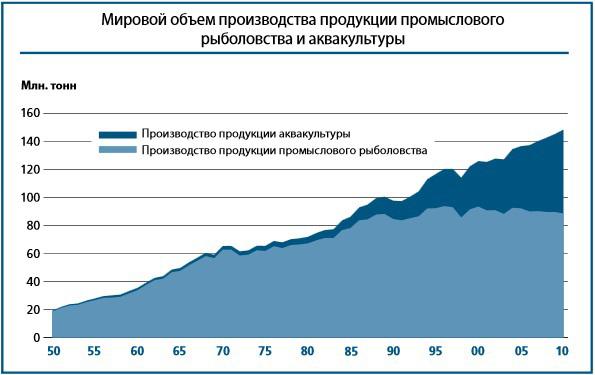
However, the main problem with the production of food resources is connected not so much with the reduction gidrobioticheskih or land resources (per capita) than with environmental problems and the organization of production / distribution of these resources. This leads to the fact that 1/3 of the food produced in the world, simply thrown in the trash ! Output is not a rosy picture, 15% of the population is systematically starving, though food production by 16% exceeds global demand! Obviously, the solution to this problem is not on Mars, and especially not on the moon.
Recent advances in genetic engineering allow the hopes that people will be able to create a biological culture can not only survive, but also to give a rich harvest heavy duty terrestrial deserts, and even transform these regions.
And maybe that пророчества Tsiolkovsky the possibility of "(...) even huge greenhouses to do with the walls are very thin. Maybe even plant and redesigned so that they will live without external gas environment by recycling all within yourself, as zoophytes (cacti). If we dream of such a transformation for the animals, how much more can the scientific thinking about the same for the simpler creatures, what are the plants. "Affect the application of man in space techniques and biotechnology, very successfully tested on Mother Earth.
Artificial bacterium Mycoplasma capricolum. Probably the first step towards the fulfillment of the "prophecy" Tsiolkovsky.

Much more encouraging situation with minerals. Land is not only the largest of the terrestrial planets, but also exceeds the mass of the planet in this group all together, including the Moon. Geologists believe our rocky giant theoretically inexhaustible fount minerals (except hydrocarbons).
However, resource extraction on the Moon and the asteroid belt can be justified in the case of the demand for rare earth and prospective resources. One of the most likely solution to the energy problems of mankind is considered controlled thermonuclear fusion. Initially intended to be used deuterium-tritium reaction. The first isotope of hydrogen in large quantities is contained in the oceans (5 * 10 ^ 16 kg!), And tritium is produced by the synthesis of lithium 6, which is enough in the earth's crust (20g / ton of rock), and the thickness of the Oceans (17mg / L). However, in the future may use extremely rare isotope of helium-3 to deuterium-helium reactions with much more energy than in the deuterium-tritium cycle!
Large reserves of this isotope linked to the lunar regolith, which may be the main reason of a permanent human presence on the lunar surface in the future. No less interesting are the platinum group metals, which are rich in class M asteroids, especially extremely rare on Earth iridium.
Touching clip about everyday life future miners helium 3 / f "Luna 2112».
In the next section we discuss the scientific and technical imperatives of human presence in space. No doubt that it is scientists and engineers will be the forerunners shock troops working space corporation of the future. And of these foremost scientific thought will not be limited to the potential financial gain.
Source: habrahabr.ru/post/224193/
Memories of past life
Service Thingiverse - Universe for 3d printing (review of the program for creating 3d models 3d printing)






